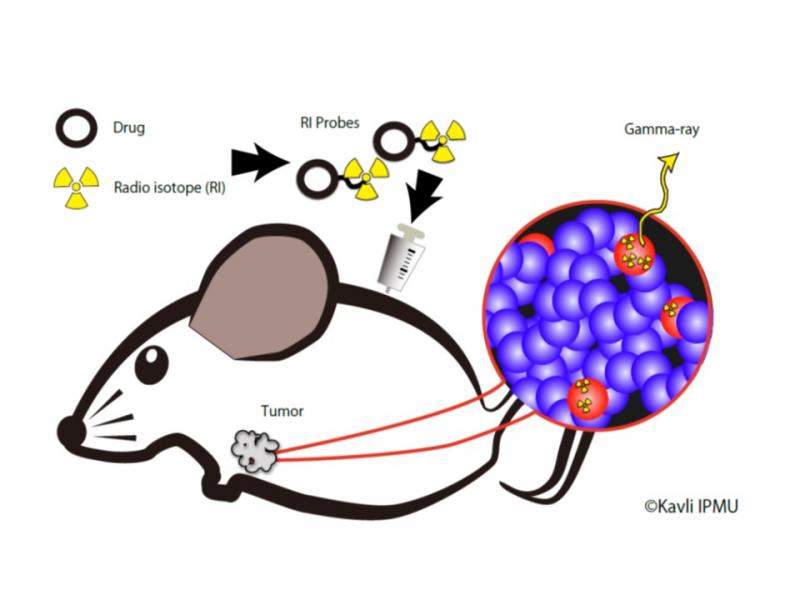
Experiments to search for fundamental particles and Observations in Space to detect extremely faint signals from very distant celestial objects require the most advanced technology. Based on advanced hard X-ray and Gamma-ray detector technologies for space observations, we have started interdisciplinary activities to develop advanced detectors which could meet long-standing needs of researchers in nuclear medicine to address their urgent research topics.
In-vivo and three-dimensional gamma-ray imaging of small animals, such as mice and rats, plays a key role for studying drugs and drug-delivery systems aiming at inventing new methods of diagnosis and treatment of cancer in a pre-clinical phase. Since their discoveries in 1997, cancer stem cells (CSCs) have been the subject of intense research. CSCs are believed to be responsible for the overall organization of a tumor. Even if the tumor shrinks after chemo/radiation therapy, remaining CSCs induce recurrence and metastasis. If we are able to perform in-vivo imaging of CSCs and to identify them individually with a help of drugs labeled with radio isotopes, the situation would change drastically, because effects of cancer drugs can be easily tested with living mice.
At Kavli-IPMU, we are working on advanced gamma-ray imagers to tackle with the important problem of cancer studies. CdTe-based semiconductor imagers are promising candidates for new generations of high resolution 3D SPECT system to see the location of cancer stem cells in the body of living mice. Its high energy resolution, in conjunction with their position resolution could discriminate different distributions created from gamma-ray lines with different energies. This enables us to use multiple drugs labeled with different radio isotopes, at the same time.
New requirements from applications, such as nuclear medicine, are expected to further advance the performance of the detectors and enable us to design future hard X-ray and gamma-ray missions with much higher sensitivities than the present ones.
(Last update: 2018/06/11)
News
- Researchers adapt technology made for astronomical observations to biomedical imaging (April 5, 2022)
- Under development medical camera could help cut time and cost of procedures (Jul 24, 2019)






